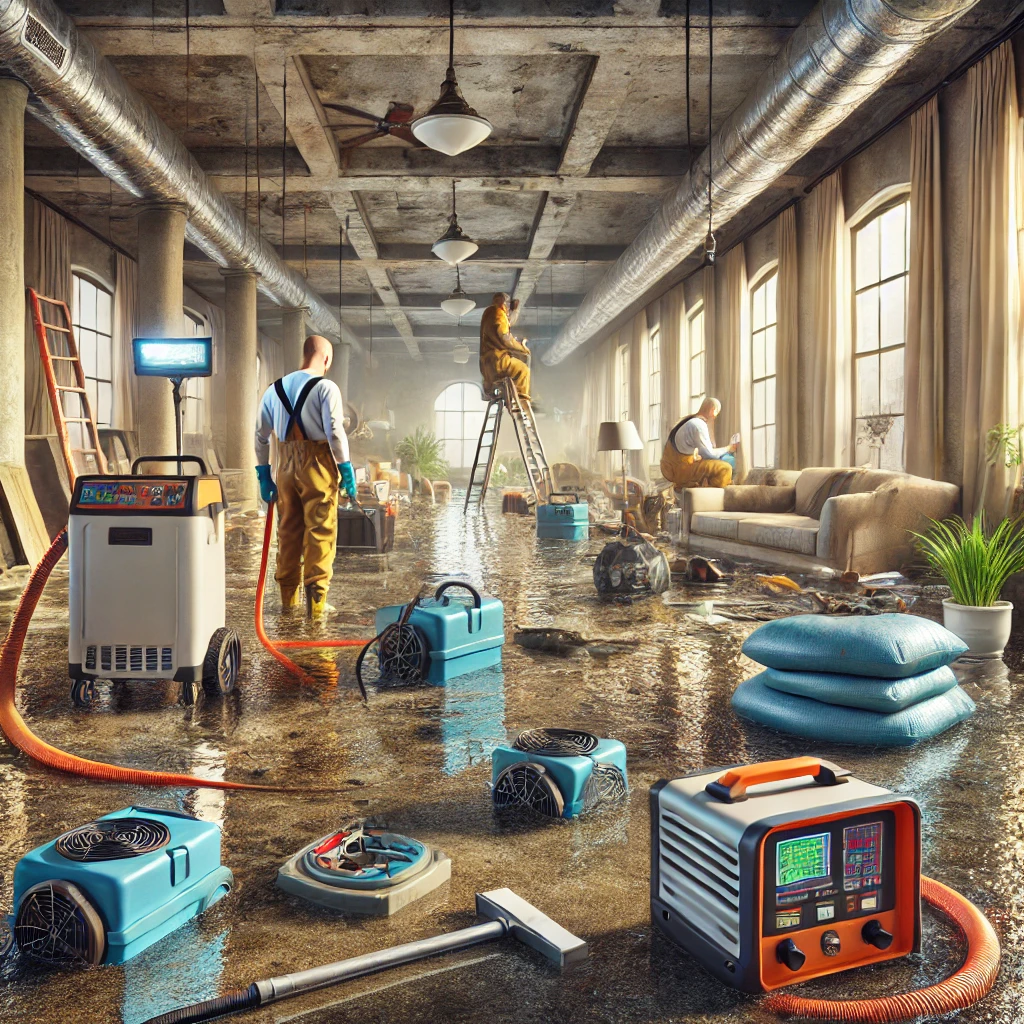Effective water extraction and drying are crucial steps in the restoration process following water damage. Whether due to flooding, leaks, or burst pipes, managing water extraction and drying effectively can prevent further damage and reduce the risk of mold growth. Each phase must be executed meticulously to ensure the safety and longevity of the property. We will explore how water extraction and drying are performed, the tools and techniques used, and the importance of each step in the restoration process.
Understanding Water Extraction
Water extraction is the initial and critical phase of the restoration process by IGT National, focusing on removing standing water from affected areas. This step is performed using various tools and methods designed to quickly and efficiently remove large volumes of water. Extractors, including submersible pumps and wet vacuums, are commonly used to address standing water. Submersible pumps are ideal for deep water removal, often used in flooded basements or large areas where water has accumulated significantly. Conversely, wet vacuums are more suited for smaller volumes of water and areas with limited access. The effectiveness of water extraction depends on the speed and efficiency of these tools. Prompt removal of water minimizes the risk of damage to building materials and furnishings and reduces the potential for mold and mildew development.
Drying Techniques and Equipment
Once the water is extracted, drying the affected area becomes the primary focus. This stage involves several techniques and pieces of equipment to ensure thorough drying. Air movers and dehumidifiers play a significant role in this phase. Air movers, or industrial fans, increase airflow and expedite surface moisture evaporation. Dehumidifiers, on the other hand, help reduce the humidity levels in the air, which accelerates the drying process by removing moisture from the air and surfaces. Combining these devices is crucial in ensuring that all areas, including hidden spaces such as behind walls or under flooring, are thoroughly dried. Professional-grade equipment is often used to achieve optimal results, providing greater efficiency and effectiveness than standard household devices.
Monitoring and Moisture Assessment
Continuous monitoring and assessment of moisture levels are essential throughout the drying process. Restoration professionals use moisture meters and thermal imaging cameras to evaluate the extent of moisture in different materials and areas. Moisture meters measure the moisture content in various materials, such as wood, drywall, and carpet, ensuring that they are dried to acceptable levels. Thermal imaging cameras help identify hidden moisture pockets behind walls and other structures by detecting temperature differences caused by moisture. Accurate monitoring helps guide the drying process, ensuring that no residual moisture remains, which could lead to future problems like mold growth or structural damage. Regular checks and assessments are vital to determine whether additional drying efforts are needed or if any adjustments to equipment placement are necessary.
Addressing Hidden Moisture
One of the most challenging aspects of water restoration is addressing hidden moisture that may not be immediately visible. Water can seep into hidden spaces such as wall cavities, underneath flooring, or within insulation materials. Special techniques and tools are used to identify and address these hidden sources of moisture. For example, injectidry systems can introduce warm, dry air into wall cavities and other concealed spaces to facilitate drying. Removing baseboards and drilling small holes in walls may also be necessary for better airflow and moisture removal. Effectively managing hidden moisture is crucial, as failure can result in prolonged damage and potential health hazards due to mold and mildew.
Preventing Mold Growth
One of the primary concerns following water damage is the risk of mold growth, which can pose health risks and cause further property damage. Effective drying and moisture management are key to preventing mold. It is important to complete the drying process within 24 to 48 hours after water removal to prevent mold spores from settling and growing. In cases where mold growth is detected, additional steps such as cleaning and disinfecting affected areas may be necessary. Antimicrobial treatments can be applied to surfaces to inhibit mold growth. Proper ventilation and maintaining low humidity levels also play a significant role in preventing mold development. Ensuring that the drying process is comprehensive and timely helps mitigate the risk of mold and other related issues.
Restoration and Repair
After the drying process is complete, restoration and repair work can begin. This phase involves repairing any damage caused by the water and restoring the affected areas to their pre-damage condition. Repairs may include replacing damaged drywall, flooring, and insulation and repainting and restoring furniture. The restoration aims to return the property to its original state and ensure it is safe and functional. Professional restoration services often include a thorough inspection to identify and address any remaining issues before completing the final repairs. Properly executed restoration and repair work enhances the property’s appearance and ensures its structural integrity and long-term usability.
Water extraction and drying in restoration is a multifaceted and critical procedure that requires careful execution and attention to detail. From the initial water extraction to the comprehensive drying and final restoration, each step is vital in mitigating damage and preventing future problems. Effective water extraction removes excess water while drying techniques and equipment ensure thorough moisture removal. Monitoring and addressing hidden moisture, preventing mold growth, and performing necessary repairs are also crucial to restoration. By understanding and implementing these steps effectively, property owners can safeguard their homes and businesses from the adverse effects of water damage.

















